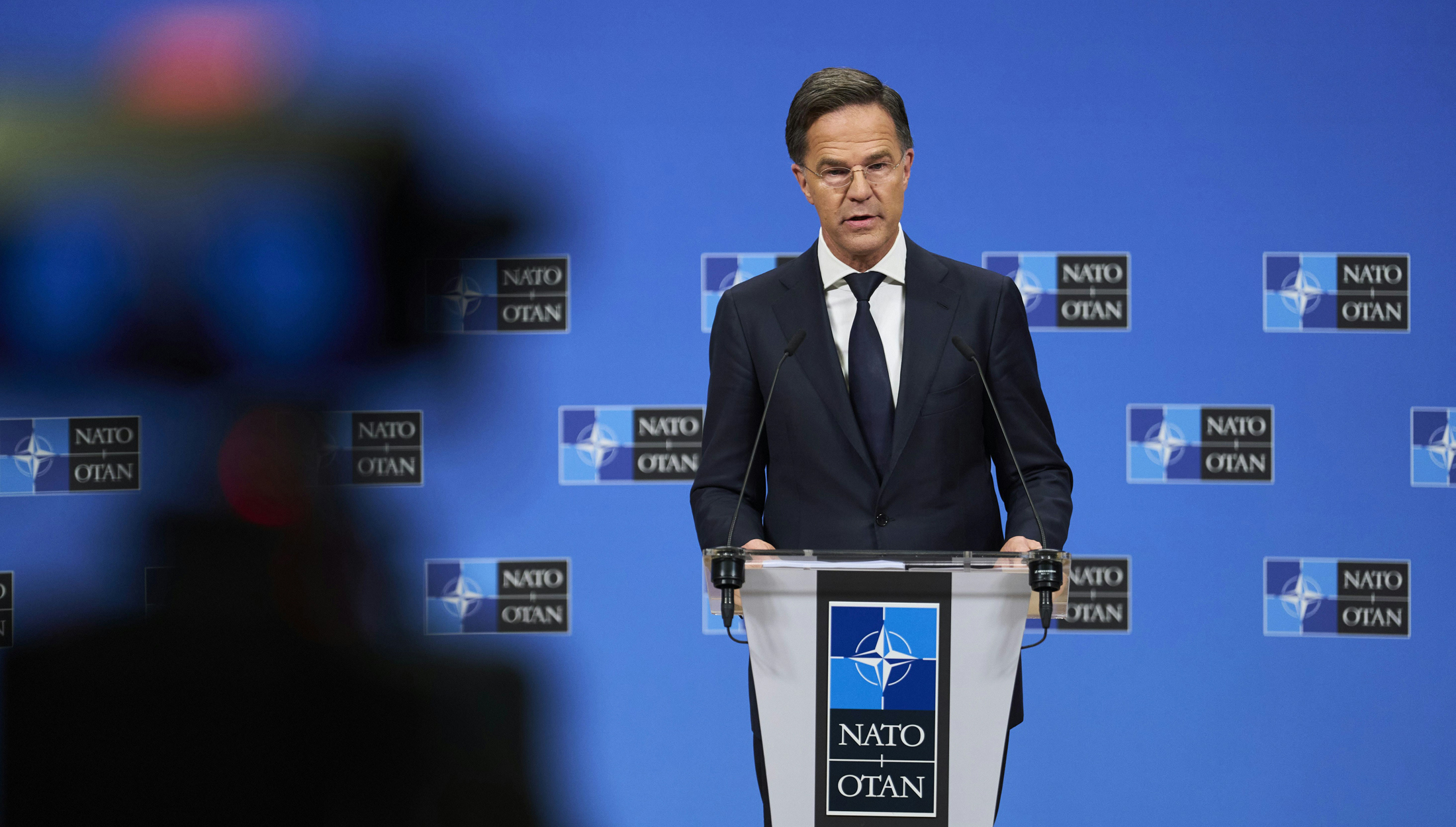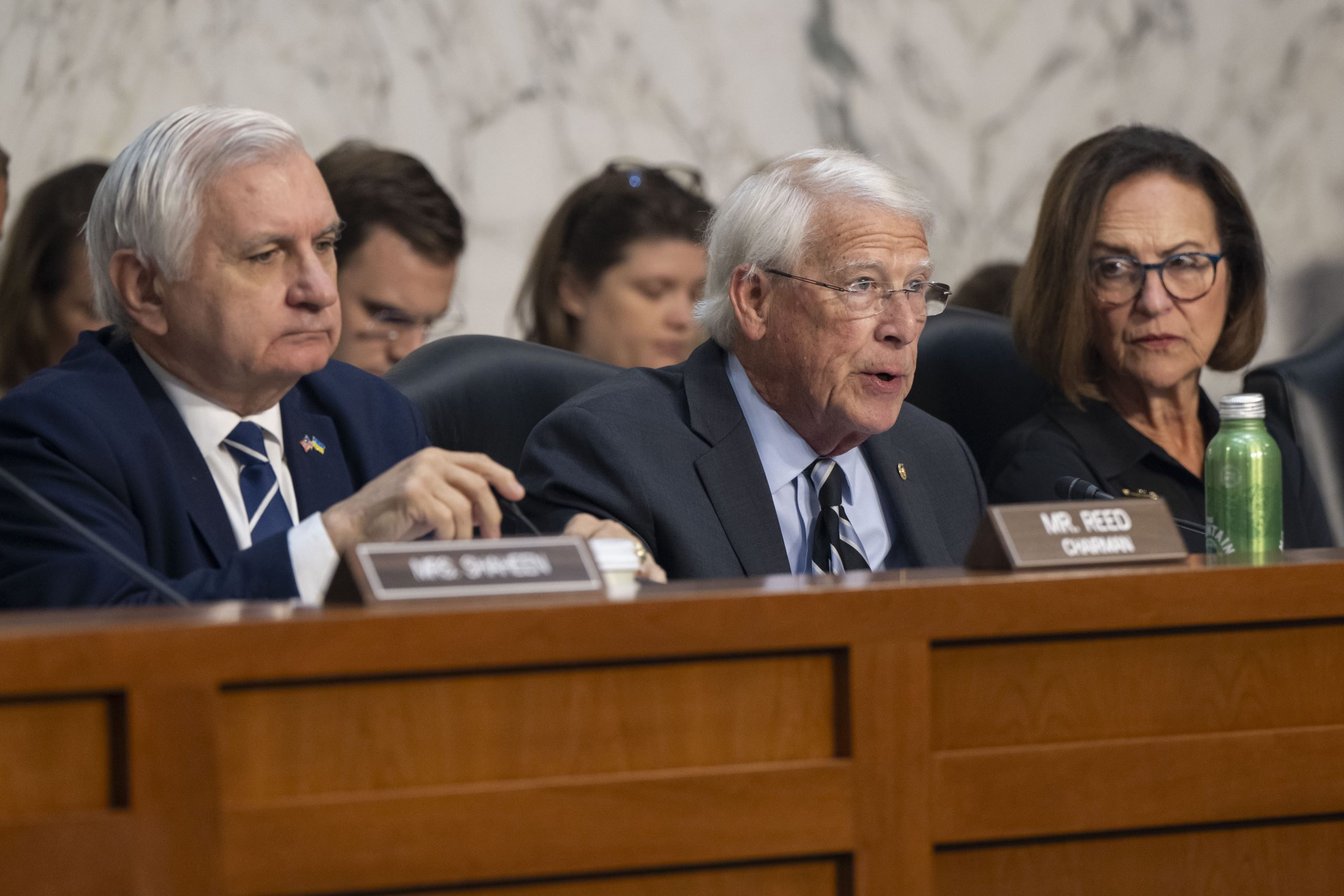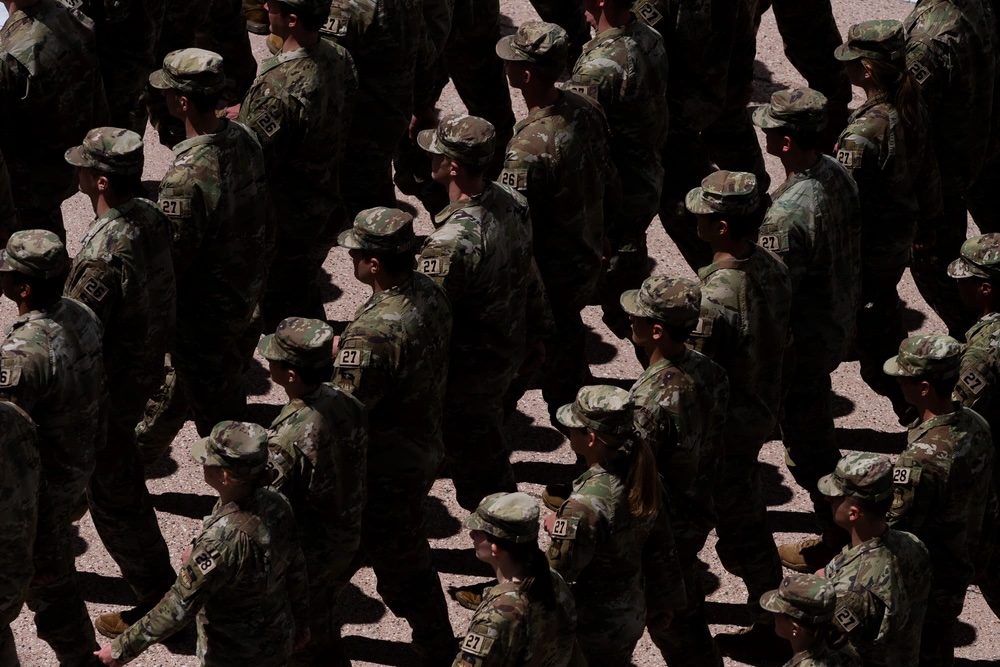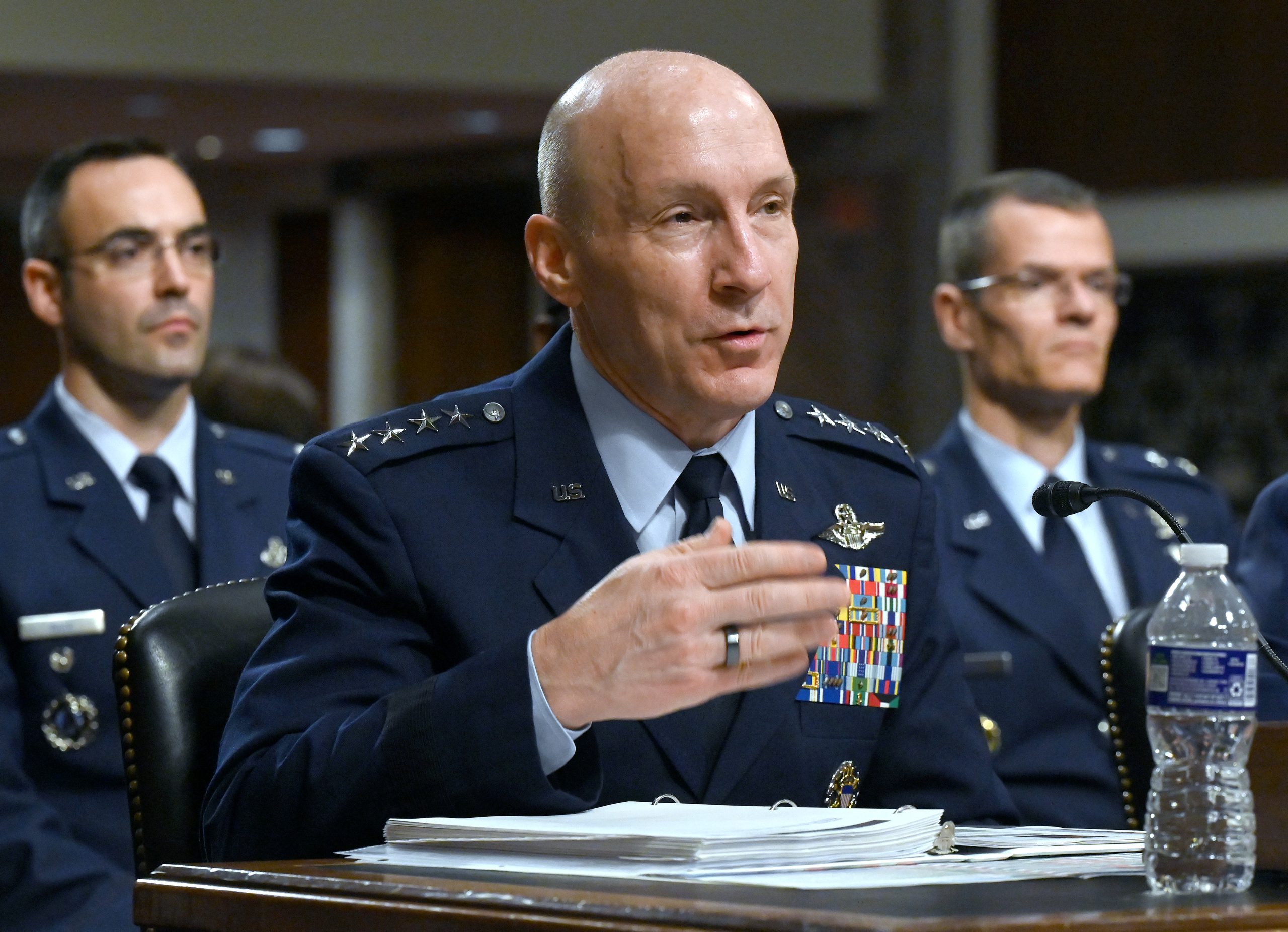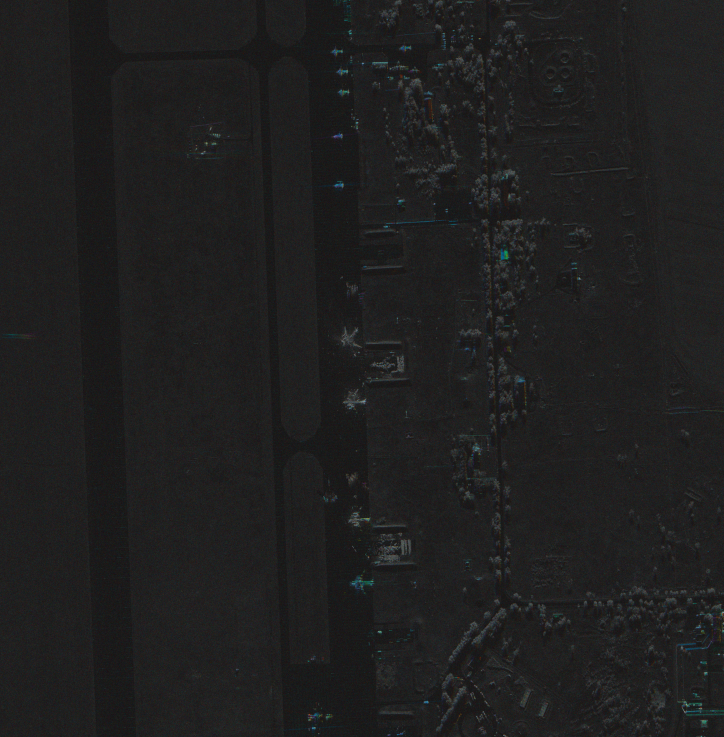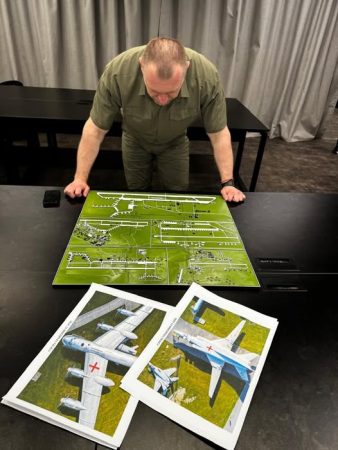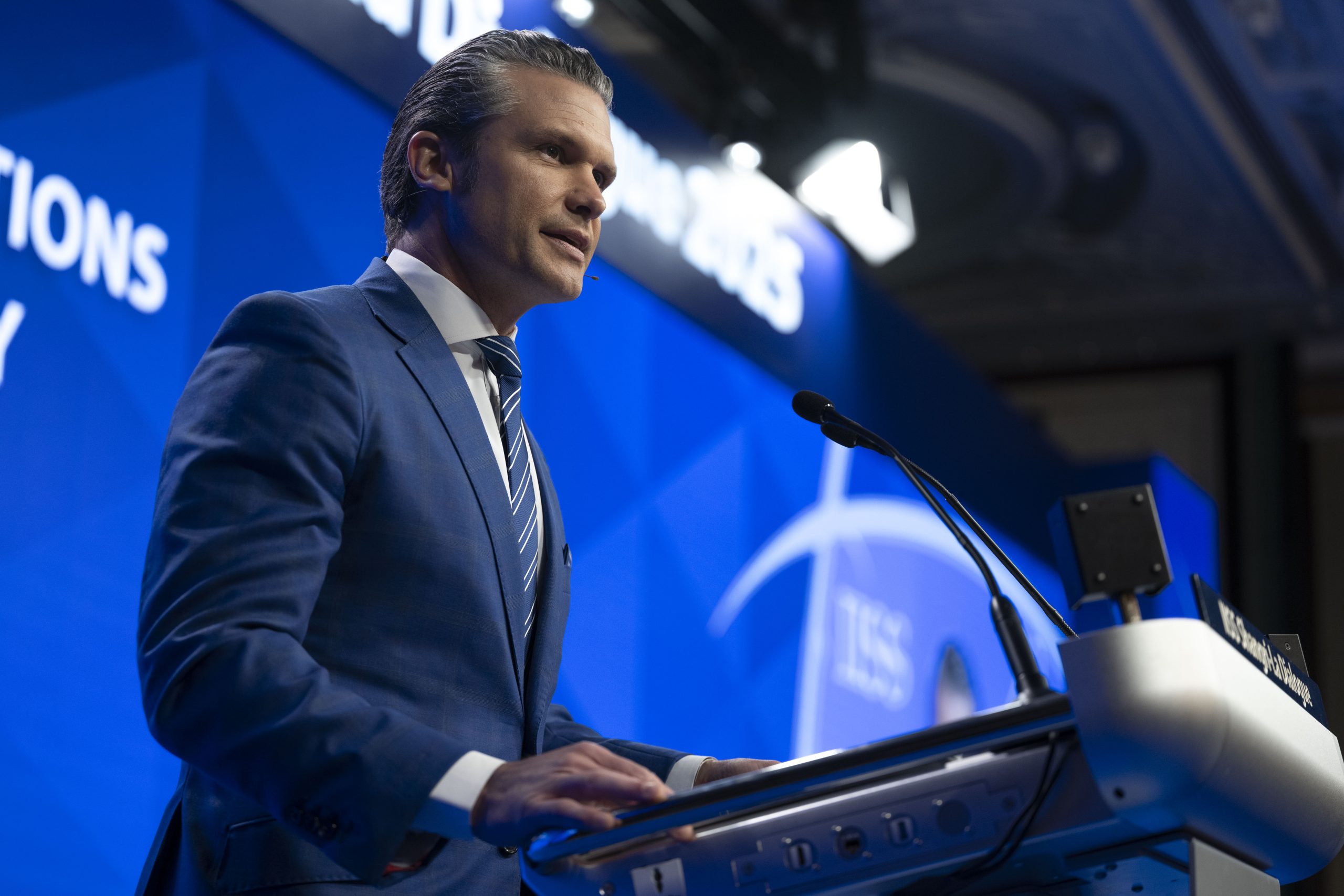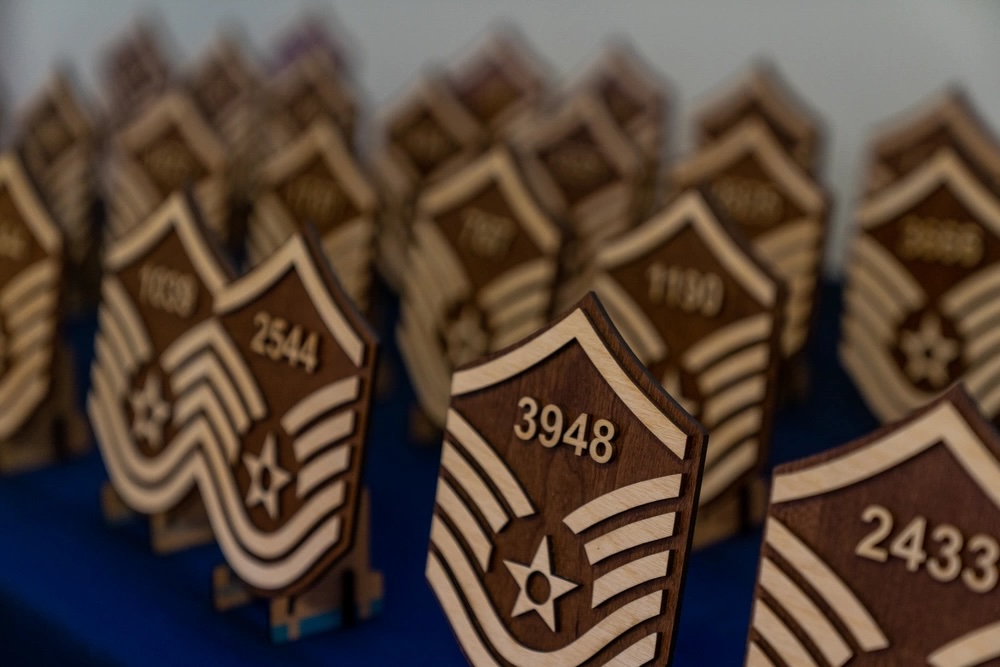Eleven years after NATO pledged to spend at least 2 percent of each country’s gross domestic product on defense, “most, if not all” 32 of the alliance’s member nations are poised to reach or surpass that goal in 2025, Secretary-General Mark Rutte said June 4 at a ministerial meeting in Brussels.
NATO’s non-U.S. members will now be assigned “capability goals,” based on the role each country is expected to play in European defense, Rutte said. Those targets will be rolled out in three weeks at NATO’s full meeting at The Hague.
Rutte did not reference a reported plan to increase the contribution goal to 3.5 percent, or the 5 percent that U.S. Defense Secretary Pete Hegseth urged at the NATO ministerial in February.
“At this ministerial, we are going to take a huge leap forward,” Rutte said at a June 4 press conference. “We will strengthen our deterrence and defense by agreeing [to] ambitious new capability targets,” he said, but to do so, “it’s clear that we will need significantly higher defense spending.”
“That underpins everything,” he added.
The U.S. spent 3.4 percent of its GDP on defense in fiscal 2024, down from a historical average of 4.2 percent. POLITICO reported June 4 that 23 of NATO’s 32 members are on track to spend at least 2 percent by this summer.
It’s “only fair” that the non-U.S. NATO nations increase defense spending, Rutte said, acknowledging that the U.S. is pivoting its focus to security in the Pacific.
“We have to . . . equalize with the United States,” he said. While NATO is “extremely important” to America, Rutte added, the U.S. is “so big and powerful” that it logically must concentrate on other military theaters. He said the U.S. does not plan to withdraw from Europe.
The sharp increase in defense spending is necessary, Rutte said, because the Russian threat “is there for the long term,” and despite its economic difficulties, Russia is “producing four times more ammunition than the whole of NATO.”
Purchasing munitions should be the alliance’s top priority, he argued, no matter how politicians decide to fund it.
“I only need to make sure that, collectively, we have what we need to prevent us from taking Russian language courses,” he said.
Speaking at a press conference after a meeting of the Ukraine Defense Contact Group, the multinational effort to provide Ukraine with the weapons, vehicles and funds to prevail in its ongoing war with Russia, German defense minister Boris Pistorius called contributing 5 percent of GDP to defense “unrealistic.” Gradually increasing spending to hit that target is “possible and certainly needed” in light of the war in Ukraine, he said, but it would be a struggle to achieve that goal quickly—especially for smaller NATO allies.
Pistorius said the proposal will be discussed at the NATO summit later this month.
“It’s not about disappointing anybody,” he said. “It’s about negotiating . . . what is necessary and what’s possible.”
Germany announced after the meeting it will provide $5.7 billion worth of aid to Ukraine, focused on ammunition and air defense systems. The United Kingdom pledged $5.1 billion, of which $400 million will be used to build drones. Belgium, Canada, the Netherlands, Norway and Sweden also pledged new aid to Ukraine, including ammunition, drones and naval equipment.
Rutte said that non-U.S. NATO members and European Union members have pledged “20 billion euros for Ukraine . . . in the first three months of this year,” versus 50 billion euros last year.
He did not detail how countries will share responsibilities under the new allocation of roles, but said the top priorities include “air and missile defense, long-range weapons, logistics, [and] large land-maneuver formations.”
“We need more resources, forces and capabilities so that we are prepared to face any threat, and to implement our collective defense plans in full,” he said.
The U.S. has long assumed the greatest responsibility within NATO for long-range aviation and aerial attack, while Germany has provided the bulk of ground troops and electronic attack. The U.S., U.K., and France have provided the lion’s share of naval forces, and other countries have filled in the remaining capabilities. In recent years, however, NATO’s dramatic expansion has meant that non-U.S. countries are bringing on far greater frontline aviation and air defenses, with many more fifth-generation F-35s than the U.S. will station in Europe. Poland’s ground forces rival those of Germany, and newer, smaller NATO allies have niche capabilities in logistics and special forces.
The need for greater NATO spending is made clear by “Russia’s brutal war against Ukraine, the threat of terrorism, and intense global competition,” Rutte said. The alliance this week will “assess the gaps we have in our collective defense,” he added, to ensure NATO’s protection against Russia and China “not only today, but also in three to five years.”
Also on the table are a renewed investment in “infrastructure and resilience,” Rutte said, as well as a push to build munitions production capacity.
Rutte, echoing U.S. defense officials and associations that have said companies need to see strong demand to invest in greater weapons production, said the plans for increased funding are about “making sure . . . that our defense industries will put in extra production lines, extra shifts.”
Rutte praised the Trump administration’s efforts to “stop the bloodshed” in Ukraine and achieve “a just and lasting peace.” He said NATO’s efforts to support the beleaguered country, which Russia invaded unprovoked in 2022, are about ensuring Ukraine’s self-defense and preventing further aggression on the continent, not prolonging the war.
“Putin should never, ever try this again,” he said of the three-year-old invasion, “and that means we have to test him” and sit down to regional peace discussions.
“The U.S. is taking the lead on this, and I’m really glad that they do that,” Rutte said.
Asked if he believes the U.S. is solidly backing Ukraine—Hegseth skipped this contact group meeting—Rutte said the U.S. “is completely committed to NATO; completely committed to our joint endeavors when it comes to Ukraine, there’s no reason to doubt that.”
“Most of these meetings take place in Europe, so it will not always be possible for U.S. officials to participate in every meeting,” he added.
It’s the first meeting of Ukraine’s roughly 50 military benefactors at the U.S.-run Ramstein Air Base in Germany that a U.S. defense secretary will not attend, according to the Kyiv Independent.
“We are at a pivotal moment for our security,” Rutte said. “Make no mistake, NATO is strong today, and we will become even stronger. Strong defenses send a clear message: No one should ever think of attacking us.”
